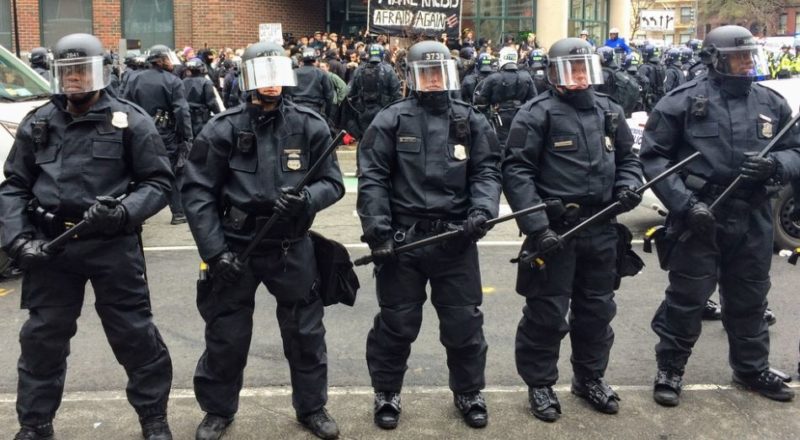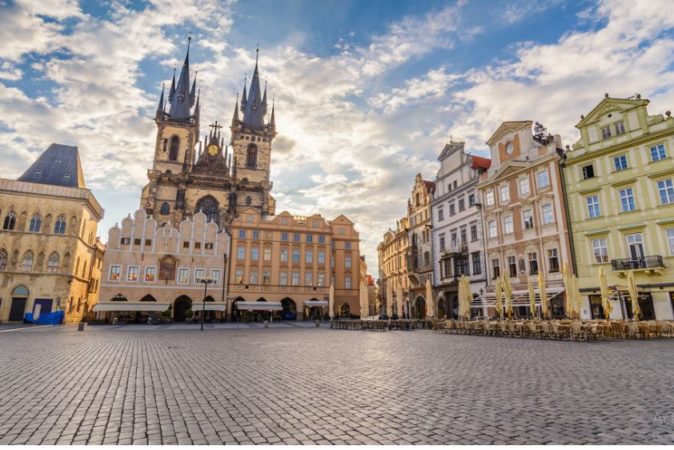India’s war on walking and why it is killing us and our cities
 No Walking Allowed Here
No Walking Allowed Here
If you want to make a difference to the environment, and your own health, walking is the easiest way to start. Not only is this the simplest exercise for a populace becoming increasingly unhealthy, I always find walking as the best way to get to know neighbourhoods really well, besides the many other small joys it brings. And then there is the health benefit of course. So why do our city planners seem hell bent on destroying our ability to walk across for short, or even longer distances in our cities? We can spot 4 broad signs:
a) Mixed Land Use is spreading.
When cities were planned, a well established maxim of zoning areas was followed till about 1990 , with industrial, commercial and residential clusters all placed separately. While creating the famous urban sprawl, zoning had demonstrable benefits in terms of better health, lesser congestion and other benefits for residents. Thanks to the land mafia across India, which ensures low FAR ( The ratio of the total floor area to the land on which a building is made) across cities, creating a conundrum of really low area per resident in cities like Mumbai, when compared to its peers in Asia. Not to mention massive massive slums. Today, land use is literally forced to become mixed use with no other option, thanks to this low FAR or FSI legacy. Once again, starting a new cycle of destruction of established residential zones into noisy, congested zones through the day, and night even. Be it Koramangala in Bengaluru, Bandra in Mumbai, or Greater Kailash in New Delhi, every residential colony with the luck to have relatively better and importantly, wider roads, is today being punished for the luxury with conversion to mixed use status. Instead of increasing the FAR for say, only residential use. Or in commercial clusters. What this all leads to is the unbelievable congestion, and encroachment on every available public space for paring, and other street businesses. Leaving us with no space for , yes, walking.
b) No planning for parking, with minimal respect for pavements consequently.
One of the abiding mysteries of Indian policy has been to measure progress in terms of the growth of the auto industry, mimicking the American and European models of decades past. This love for the personal vehicles has meant that almost all transportation and road policy has been held hostage to private vehicles, with more and more spaces being surrendered for the ‘convenience’ of private vehicles. Anything between 65 to 85% of all road space in our major cities are given over to private vehicles, with parking lots taking over every public apace, and even smaller green patches. This road hogging by personal vehicles, with public buses for instance taking up barely 2% of space in a city like MUmbai, which had a proud history of a solid bus transport system till 2000, has become a vicious cycle. Where people feel compelled to purchase a personal vehicle thanks to the lack of alternatives.
No city in India has prioritised public transport in the past 30 years. Even cities like Indore and Ahmedabad, which bravely set up Bus Rapid Transport systems, have limited them to small stretches. Mumbai and Kolkata and to an extent Chennai, had legacy public transport systems which seemingly ran on sheer momentum, before giving way finally, on the back of underinvestment and low priority. Of course, these tended to be high cost too, thanks to government salaries and perks. The result is a dysfunctional public transport system, where the number of people using it is the only metric that matters, with zero priority to the comfort, or even fatalities on the system each day. Thus, even as Mumbai’s famous suburban rails are hailed as the lifeline of the city, little attention has been paid to their gory record of deaths. In 2017, apparently, 3014 people died while travelling by the suburban trains, or more than 8 every DAY. Based on records we could access, there has not been a single year since 2000 when less than 2000 people have died. Delhi, which has actually improved now thanks to slower average speeds caused by congestion, still managed to kill 1591 people in 2016.
c) The shrinking space for cycles. Cycles, the one personal transport vehicle that was healthy, low cost, and with minimal requirements for parking space have been ruthlessly pushed off the roads. with no dedicated cycle lanes, existing lanes being taken over by larger two wheelers with impunity, the cyclist in India lives a dangerous life on the roads. Which is perhaps why the only category of cyclists growing is in the ‘adventure’ category, where cyclists set off in groups to explore areas where roads are preferably not motorable. If Beijing and China in general has its millions of cyclists, India has today reduced its cyclists to scrabbling for road space, without the opportunity to grow economically to a motorised vehicle to claim his rightful space too. Even as the European countries we admire for their planned cities, from Netherlands to Denmark to the UK and France, scramble to become more and more bicycle friendly.
d) Design and development of public spaces: This is perhaps the most striking of all. Traditionally, pedestrians always send time in, or prefer to walk to places that offer large, open spaces to walk in. Witness the legions of people whose idea of a walk today is a trip to the larger malls, which, thanks to their size and larger perimeters, offer some sort of a buffer from the roads. On the other hand, too many of the malls that have come up are right on the roads, with barely any buffer between them and the road. Killing any opportunity or incentive to walk. This thoughtless design mindset, driven by real estate costs that rioritise stuffing as many outlets as possible inside, have further discouraged the walk in customer, so to say. And on proper public spaces, the less said , the better. This writer can challenge you to name 2 public spaces in your city that have come up since independence. Defined as an open, connected space, that is at least 25,000 sq meters or more in area. Strange as it may seem now, the only leader to make these, perhaps inadvertently, is the BSP leader, Ms Mayawati, who did it in the act of making her huge monuments to her party ideologies and other luminaries of the dalit movement. Thus, Noida and Lucknow have ended up as the only two cities in India that have seen a formal, large public space being created.

Every other public space, be it memorials to leaders or pre-independence spaces like the India gate lawns , or the maidan in Kolkata, or even Mumbai’s famous grounds near Churchgate, have seen a relentless parceling out to interested parties for private functions, or activities that have simply made them out of bounds for the ordinary walker. We have all been watching how the Marina beach in Chennai, a walkers retreat if there ever was one, has been under seige, as monument after monument to dead politicians comes up there, shrinking the available space for walkers all the time.
So what can you as an ordinary citizen do? Keep fighting. Fight to protect every green area that is marked out for a badly planned road or parking lot or any such move that has no long term future. Push to reclaim access to pavements, or create pavements in at least the new developments coming up. Lobby your local representative to allow access to the parks and forests under siege for private functions, agitate for a better public transport system, and most importantly, look at how you need to be a part of the solution, not the problem. Can you avoid that short drive on the car to the market? Do it, it could be the first step in rediscovering your neighbourhood, and the joy of living well.




